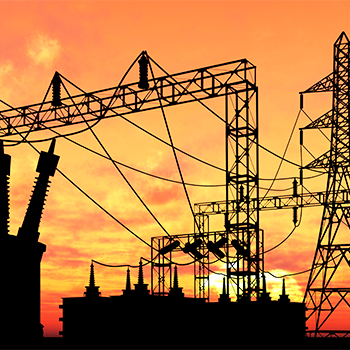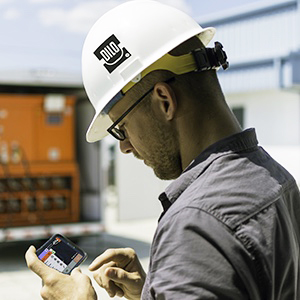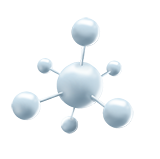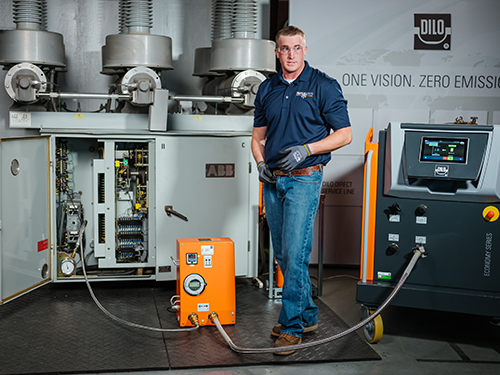What Is SF6 Gas and Where it is Used?
The global market for SF6 is growing. According to Grand View Research, its value is expected to reach $309.8 million by 2025, increasing at a compound annual growth rate (CAGR) of 6.0%. What is SF6 gas? Sulfur hexafluoride gas comprises properties that make it ideal for many applications including the electrical utility sector and more. Learn more about the various uses for SF6 gas, as well as other important characteristics.
Properties of SF6 Gas
From a chemically stable composition to its ability to withstand extreme conditions, SF6 gas is highly sought after for insulating uses and more. SF6 gas is colorless, odorless gas with a vapor density five times that of air. It is able to stay in vapor form (at normal operating temperatures) up to about 250 PSI. Some additional properties of SF6 which make it very desirable to the electrical utility sector are:
- Colorless and odorless
- 5 times heavier than air
- Temperature-resistant up to 500 °C
- Non-inflammable
- Chemically molecular structure
- Non-toxic
- Excellent dielectric properties (high dielectric strength)
- Outstanding arc quenching properties
- Five times higher density than air, meaning it stays in vapor form until about 250 PSI @ 68 deg F
- Temperature-resistant up to 500° C
- Electronegative, meaning it does not form other compounds that may change its condition or effectiveness
Manufacturing SF6 Gas
During the Kyoto Protocol, a global convention where world leaders discussed strategies to reduce greenhouse gas emissions, SF6 was named one of the six gases with the most potential to contribute to global warming.
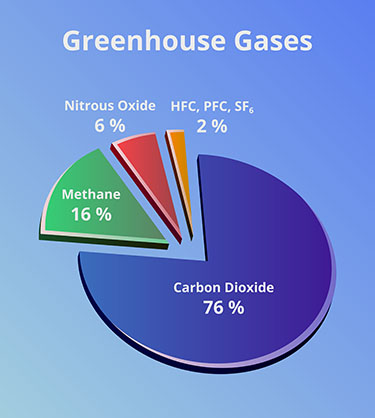
Given this concern, SF6 gas is not manufactured in the United States. Instead, all virgin gas must be imported from other countries, which have fewer environmental regulations. It’s during the manufacturing process that significant SF6 emissions are created causing a negative impact on the environment.
Applications of SF6 Gas
It is estimated that approximately 80% of global SF6 gas usage occurs within the electrical industry. One of its main uses is as dielectric insulator in medium and high-voltage equipment . Some specific examples of Gas Insulated Equipment (GIE) s that utilize SF6 gas include:
- Circuit breakers
- Switchgear
- Disconnectors and ground switches
- Gas-insulated lines and substations
- Capacitors
Outside the electrical utility sector, SF6 gas has many creative uses, from healthcare to household products. These applications include:
Ophthalmology
Ophthalmologists perform a surgery called a vitrectomy to treat issues affecting the retina and vitreous (the gel-like fluid filling the space between the lens and retina). During the procedure, surgeons can use SF6 to fill the void left after the vitreous gel is removed. It ensures the retina stays stable during recovery, and its high density can accelerate healing.
Windows – Noise Reduction
In some double-pane windows, a combination of SF6 and argon gas is used to fill spaces between the two panes of glass. This mixture can absorb sound waves, lowering the volume of outside noise.
Magnesium Production
While less often used for magnesium production in the U.S., SF6 gas can still be seen as a cover gas for this application in China and other countries. It can help keep magnesium from reacting with oxygen during production.
Etching Gas
Manufacturers may leverage SF6 as an etching gas because of its high density and large molecular size. Applications include producing semiconductor devices, among other components. Semiconductors are found in many common items, such as cell phones, televisions, and refrigerators.
Particle Accelerators
Particle accelerators drive beams of charged particles at high speeds using electric fields. They have many applications, from radiation therapy to national security. SF6 gas is often used as insulation in the accelerator tanks of this technology.

SF6 as a Dielectric
As mentioned, SF6 is primarily employed for electrical utility purposes. The gas has high dielectric strength and superior insulating capabilities for medium and high-voltage equipment . SF6 gas is also very effective in quenching arcs that form when electrical currents switch on and off. It features high conductivity for thermal transfer — especially at high temperatures — making it better at dissipating heat when compared to air, nitrogen, and other dielectrics.
For example, when applied to circuit breakers, SF6 gas absorbs the energy generated by the arc, forming resistance across the arcing contacts and ultimately extinguishing the arc. This process allows SF6 to regernerate quickly. SF6 can also be beneficial for switchgear production because it enables manufacturers to develop more compact designs and achieve better switching capacity and plant security.
Safety and Environmental Impact of SF6 Gas
For all the benefits the properties of SF6 gas provide the electrical utility sector and other industries, its composition makes it a potent greenhouse gas.
While carbon dioxide (CO2) is often at the center of discussions about greenhouse gas and climate change, United States Environmental Protection Agency (EPA) states SF6 gas is 23,500 times better at trapping infrared radiation than a similar amount of CO2. Chemically stable, SF6 also has an atmospheric lifetime of 3,200 years. This means SF6 emissions can linger in the atmosphere for centuries without degrading.
What these values boil down to is that even a small amount of SF6 can translate into a large impact on the global climate. As such, continual development has gone into alternative gases, and many companies have already eliminated its use in production. However, it will likely take some time for SF6 gas to phase out of use altogether.
There are steps businesses can take to mitigate the effect of SF6 emissions. For instance, organizations in the electrical utility industry can devise strategies to operate more eco-friendly, such as refurbishing old equipment instead of manufacturing new equipment. Organizations that utilize SF6 can also invest in accredited training to properly handle the gas and limit their environmental impact.
Find Quality SF6 Gas Handling Equipment at DILO
Whether you are a chief financial officer for a private electrical utility business, a government official operating in the energy sector, or an individual concerned about climate change, DILO has solutions to help reduce SF6 gas emissions. We offer a range of SF6 gas products that bridge state-of-the-art technology with the latest market requirements and customer demands. This equipment allows you to achieve safer, more convenient, and more cost-effective SF6 handling and maintenance.
In addition to zero-emission SF6 gas handling equipment, DILO offers accredited SF6 gas safety and handling trainings to help you stay knowledgeable about new developments. Contact us today for more information about SF6 gas and its properties.
ONE VISION. ZERO EMISSIONS.
Unfortunately, the same properties that make SF6 an excellent insulating gas for GIE also make it a potent greenhouse gas. Quality gas handling products and well-trained technicians greatly reduce the risk of SF6 emissions. In addition to zero-emission SF6 gas handling equipment, DILO offers accredited SF6 gas safety and handling trainings.


